The Article
VR6 Power Block from HB Labs
8th November 2022
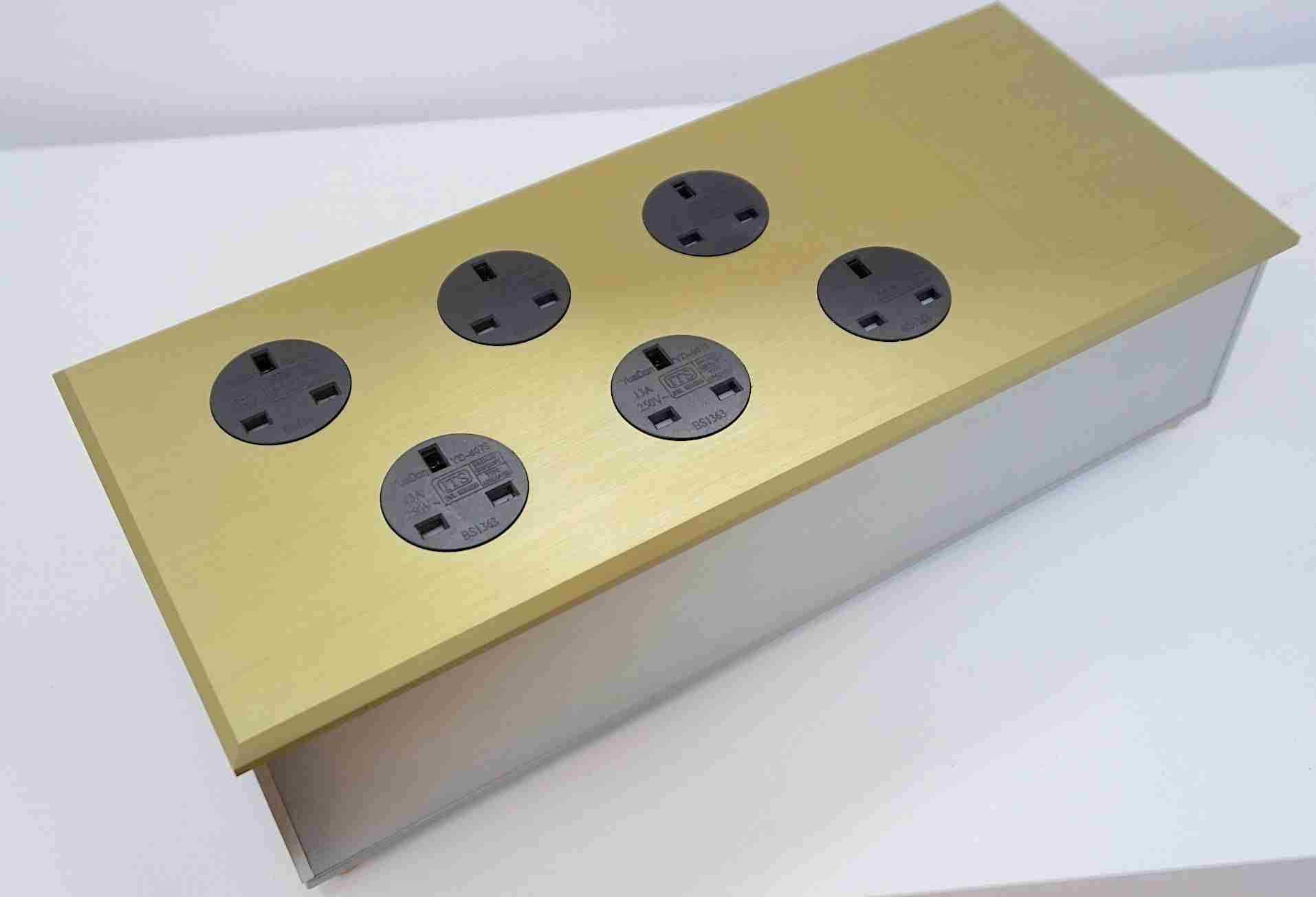
A substantial power block with six outlets, Paul Rigby plugs in, switches on and drops some discs via the VR6
And I suppose this is where I apologise and I haven’t even moved off line one yet. I headline this box as a power block but, strictly speaking, the company describes the VR6 as a Power Distributor. Which, strictly speaking, is an apt and more accurate descriptor.
Actually, that tag is printed on the top plate, along with enough additional information to form its own press release. For example, the top plate tells us that this is a relatively substantial unit spanning 380 x 160 x 95mm and weighs in at 3kg. Yes, this information is printed there, on the top plate. I’ve never seen that approach before. I like it though because it may prove useful during an install.
There’s other information on there too but we’ll get to that.
But that size, let’s quickly address the size. Currently in my system and playing a part within this review as a reference, are two – rather more expensive – power blocks. The Eros from Titan and the QB6 from Nordost are fine performers but both stand in the shadow of the VR6. Both in girth and height.
You might want to cast your eyes over this element to make sure that the VR6 will fit around your HiFi chain.
In basic terms, I like the presence of the VR6. Firstly, it will cope with those cables that are substantial, heavy and just downright awkward enough to tip over an entire power block on its side.
Secondly, most power blocks tend to hug the ground. The result sometimes means that the block itself can be buried under a criss-cross pattern of attached cabling. The VR6’s height and girth helps it to retain a physicality behind your HiFi so accessing it is easier, I feel while reaching toward it in awkward spaces means that, if you tug on the cable itself with one hand, the chances are that the cable will detach and you won’t pull the cable plus the power block and the rest of the cabling with it causing all kinds of havoc.
For those ignorant of the company itself – and that included myself until very recently – I know a little more. HB Laboratories Ltd is based in Rugby, in the UK. Well, it’s a start. As for the product itself? This block is built from solid brushed aluminium while all internal wiring are silver-plated OCC. Basically 3mm Ohno Continuous Casting which prevents annealing issues and grain boundaries. Cabling has been kept short which helps sound.
The company offers three block variants. The V8 features gold-plated sockets while there are two VR6 models with six staggered sockets, as you can see in the images here oriented in left or right directions to help access.
Again, I like that design touch.
The VR6 includes BS1363 sockets which are unfiltered – HB Labs believes that filters harm dynamics – surge protection plus an on/off switch. There’s also overload protection built in with a reset button installed on the side if that does occur. I was also sent – but have not reviewed a double wall socket, anodised on a thick brushed aluminium face but you might want to investigate this option further if you’re up for an in-wall installation.
So, how does it sound?
SOUND QUALITY
To begin, I plugged my pre-amp into a basic, cheapo, unbranded, white power block. The type you might grab from a High Street or out of town DIY store.
Then I listened to a vinyl version of That’s The Way It Is (RCA) an album from Bruce Hornsby and the Range and also Carmen McRae and the Atlantic album, For Once in My Life. Then I A-B tested those with the VR6.
Listening to the basic white power block, it took all of a second and a half for my face to scrunch into an extended wince. Music sounded positively painful. If you ever want to hear a true aural representation of ‘bright music’ then plug your HiFi into the wall with a cheap plastic power block and pump up the volume.
The upper mids were so sharp, I needed gloves to listen to it, to prevent injury. Guitar strums were clinical, vocals had more edges than granite, treble-based cymbal splashes fizzed while lead guitar was so distorted, even Hendrix would have said no.
The problem with these cheap power blocks is not that they don’t remove dirty mains signals but they actually add to the sonic problem, adding noise to the already polluted means supply.
MAN IN THE MIDDLE
At this stage, instead of dumping the cheapo power block and diverting the VR6 directly into the wall for comparison, I instead plugged the VR6 in serial mode to this same cheap white plastic power block. So the same noisy mains was hitting my HiFi but this time the VR6 was in the middle of the shenanigans.
Not the ideal set up, I realise and not the best approach to extract superior sounds, sure. Even so, I wondered if the VR6 would take a measure of action, when faced with this barrage.
Well, it wasn’t perfect but I hardly expected that, to be honest. What I did hear was a genuine improvement from the earlier mess. A measure of calm descended upon the conflagration, put it that way.
Even situated within this cack-handed set up, the VR6 removed much of the brightness from the upper mids, allowing me to actually hear the synth, spotting string-like sounds in the background for the first time. There was a measure of depth around the stereo image while bass was no longer chrome plated but introduce a measure of organic ‘give’ during strikes.
So, even left rather high and dry by my rather brutal connection regime the VR6 was doing well.
I then relented and allowed it to ‘do its thing’, removing the VR6 from the serial connection to the cheapo white block and instead, plugging the VR6 directly into the mains.
vs NORDOST QB6
I compared the VR6 with the QB6 (£1,500 approx.) from Nordost. Now Nordost does have basic a predilection towards brightness in terms of their cabling, which is why I tend to avoid the brand in that sector. The company’s power blocks though, well they are rather better and less aggressive. Problem is, to get rid of the basic bright aura from this block, you need to run it through a balanced power supply too. On that specific point, I did prefer the performance of the VR6 to the QB6. The former offered much lower high-frequency noise and hence the VR6 sounded much more cultured in the midrange.
When the Nordost was routed through a balanced power supply, the latter was superior in terms of dynamic reach. The VR6 was slightly soft perhaps in terms of midrange detail. That’s not a negative comment because it didn’t impact on my enjoyment and then there’s that massive price differential.
Even so, while the VR6 was essentially neutral, its elbows were pointing into a slightly softer direction. The soundstage from the VR6 was open and spacious. Detail had plenty of time to see what it was doing and where it was going. For treble, there was also a welcome, wide area to roam within. This gave music a relaxed and easy-going presentation. So electric guitars were almost stroked, synths were caressed into action while bass had that organic flow.
There was no sharpness here. No sting during vocal crescendos which you could often hear via the Nordost, for example.
Although I commented upon bass here, this test basically looked at the higher frequencies and source-based connections. I also wanted to test the power section to focus more upon the bass but also see how that connected to the mids and treble.
vs TITAN EROS
This was were the Titan Eros (£750) hove into view. The comparison here was a tougher proposition for the VR6. In short? With those lower frequencies? I was hugely impressed with the VR6 in its tonal balance. The smoothing nature of the mids blended easily with a rounded and organic bass response. Bass moved very easily. Lower frequencies, in fact, sounded like they had been oiled. Such was the almost effortless way bass frequencies moved around the soundstage. If there was a qualm when compared to the Eros then again, the dynamic reach wasn’t quite up there with the Eros but hey, the VR6 was far cheaper again, in price terms.
vs TITAN STYX
How about the much more evenly priced Titan Styx (£175)? This was interesting. A game of two halves, you might say. Both performed well. Both offered advantages over the other.
In terms of the midrange and treble? The Styx had the edge. Again, the Styx offered a slightly higher dynamic reach. Detail did hit a ceiling on the VR6, although I’m taking degrees here. The VR6 did – in isolation – provide plenty of information whether you’re looking at guitar solos, vocal delivery or even treble-based cymbal hits. In isolation, there’s nothing wrong with the VR6. Even so, during an A-B face off? There was a slight roll off in those extreme higher-end frequencies.
On the other side? I preferred the VR6 in how it handled the lower frequencies. There was much more bottom end here, more weight, more mass, a larger overall punch to bass. A larger prescence, even. If I had the cash? I would buy both the Styx and the VR6, placing all my sources on the Styx and my amplifiers on the VR6.
CONCLUSION
At this price point? The HB Labs VR6 Power Distributor offers buckets of value. An important factor to emphasise when considering the economic situation as I write these words. Value is more important than ever. The VR6 certainly ticks that box.
But it’s not only value, sound is pretty darned wonderful from this box. I could easily live with the VR6 in my reference system. No problem. Tonal balance, neutrality, that organic and smooth bass? The available detail up top? This one is an easy award winner.
HB LABS VR6 6 GANG POWER DISTRIBUTOR
Price: £299 Website: www.hblabs.co.ukor [email protected]
GOOD: value for money, price, bass support, build, design, overall sound quality
BAD: slight dynamic reach issue
RATING: 8
[Don’t forget to check out my Patreon Page at www.patreon.com/audiophileman, for exclusive postings, giveaways and more!]
REFERENCE
Origin Live Sovereign turntable
Origin Live Enterprise 12″ arm
Van Den Hul Crimson XGW Stradivarius Cartridge
Icon PS3 phono amplifier
Aesthetix Calypso pre-amp
Icon Audio MB845 Mk.II Monoblock Amplifiers
Quad ESL-57 Speakers with One Thing mod
Blue Horizon Professional Rack System
Harmonic Resolution Systems Noise Reduction Components
Air Audio AC-2K Balanced Transformer

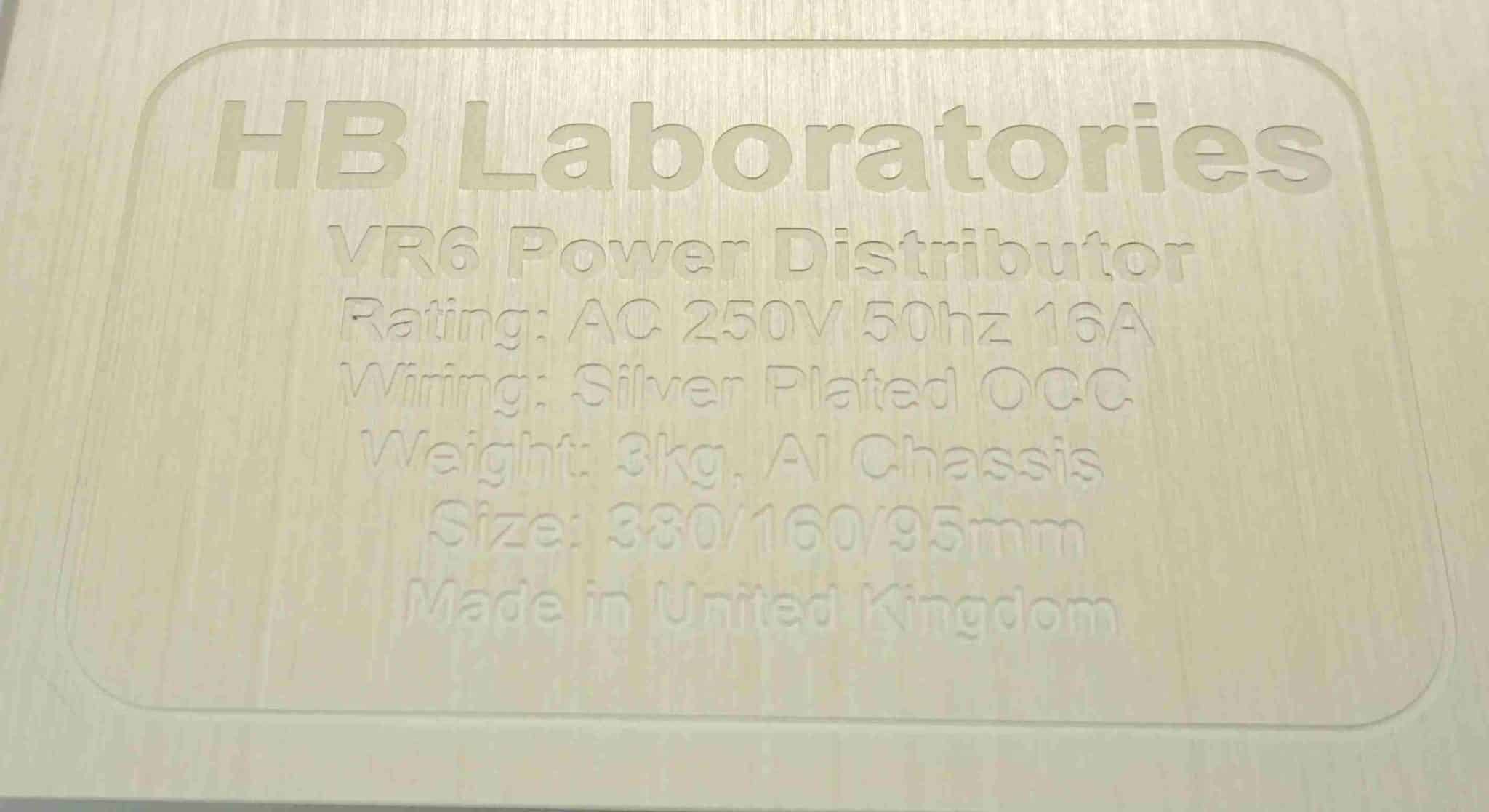
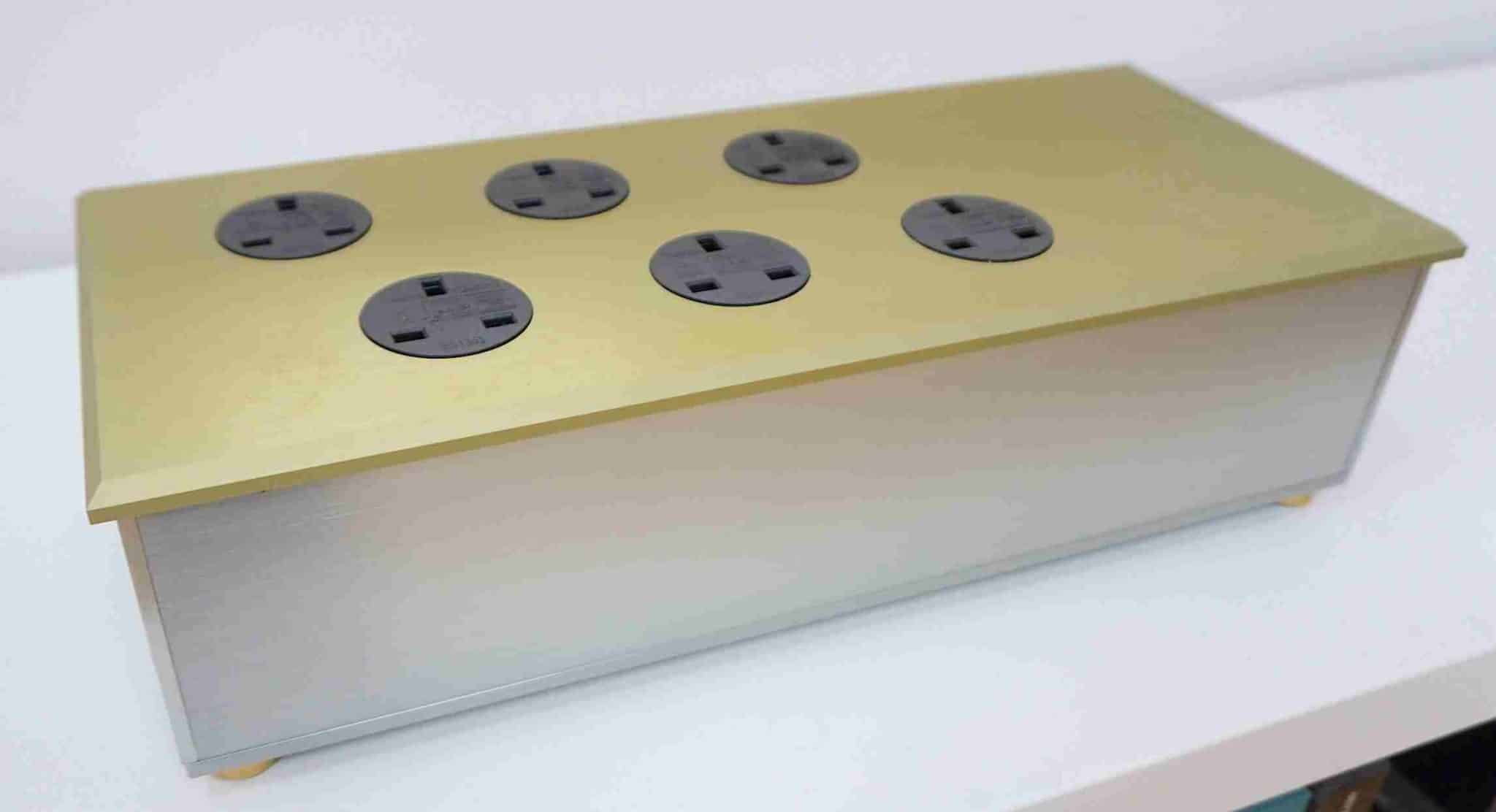

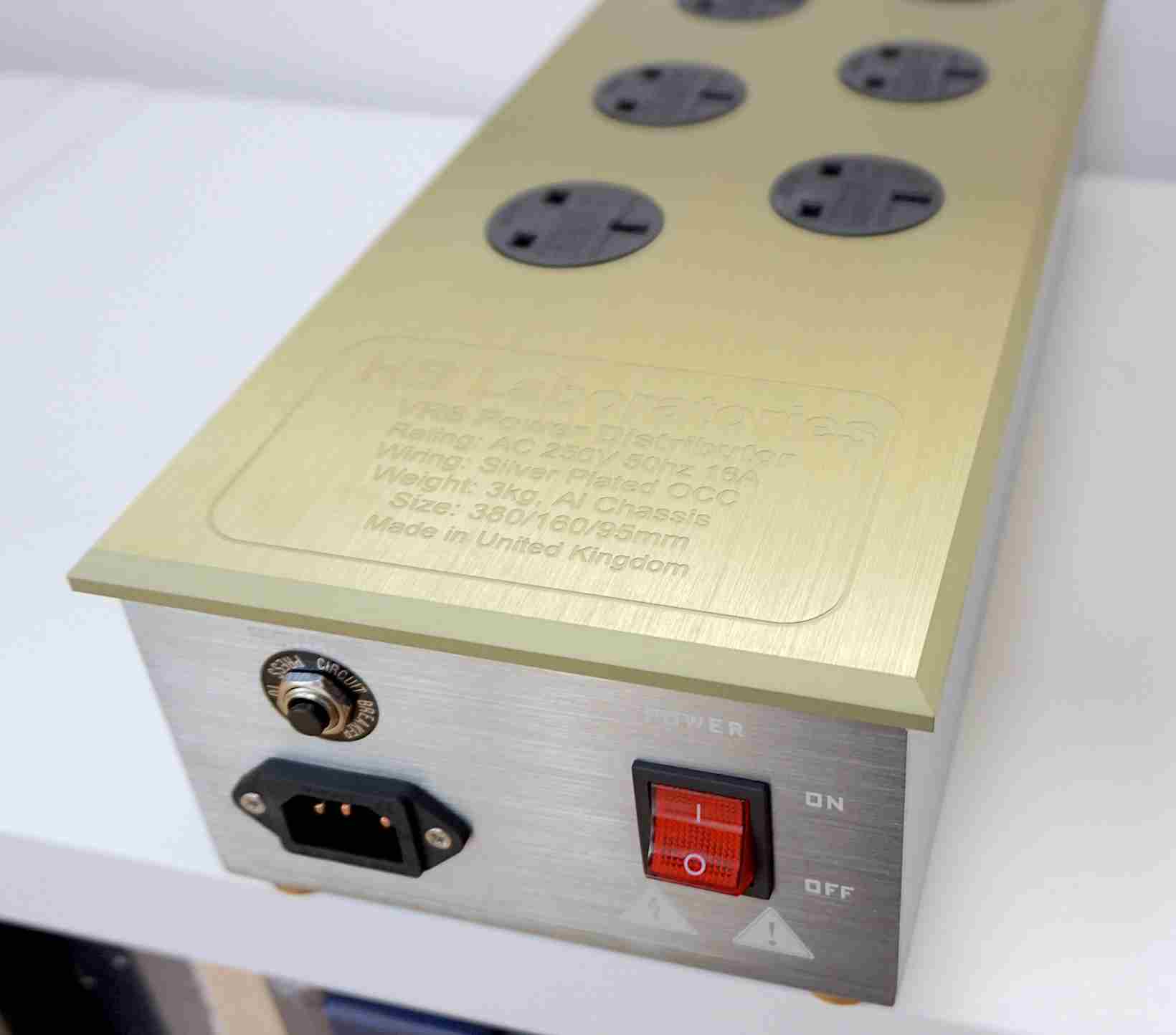
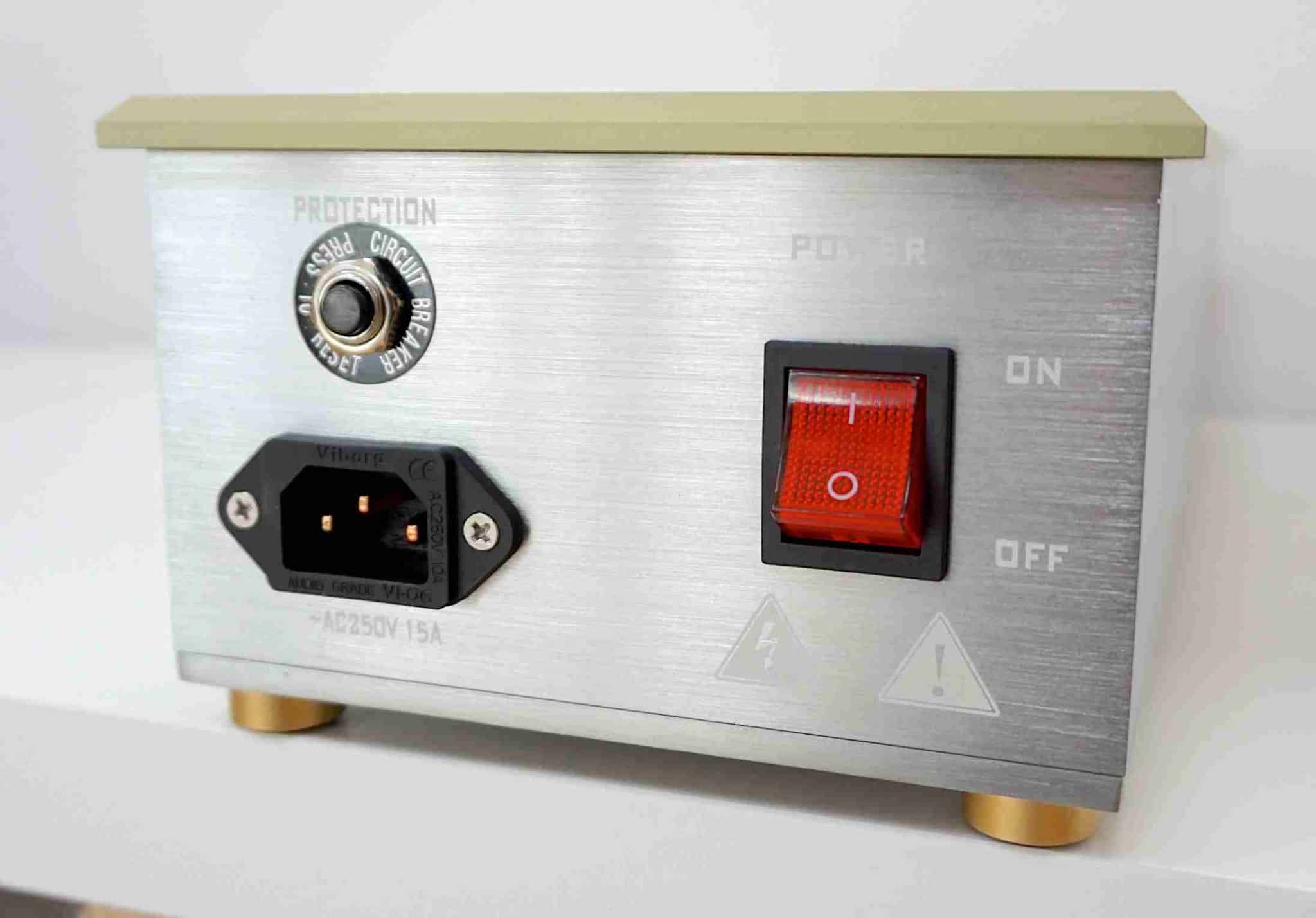
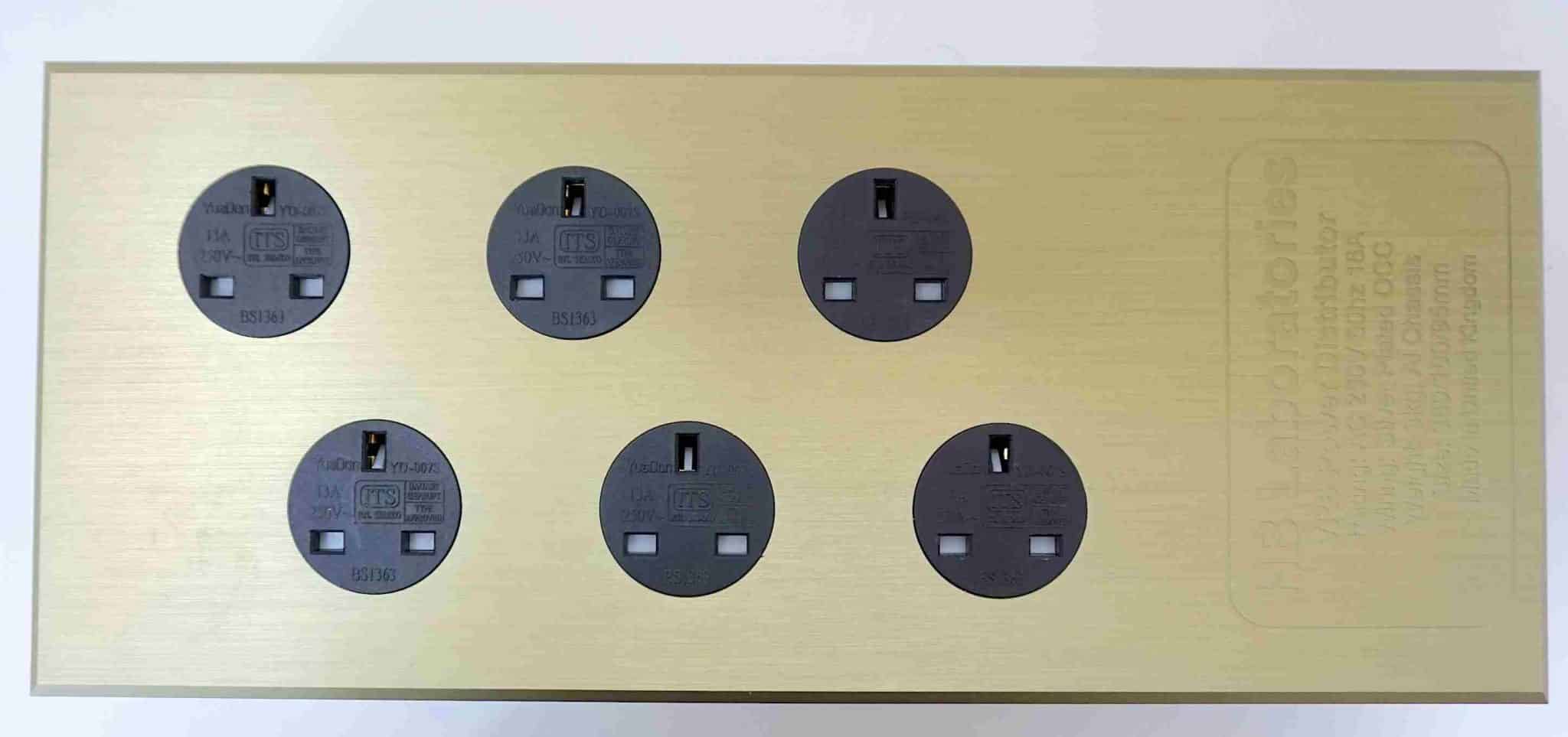
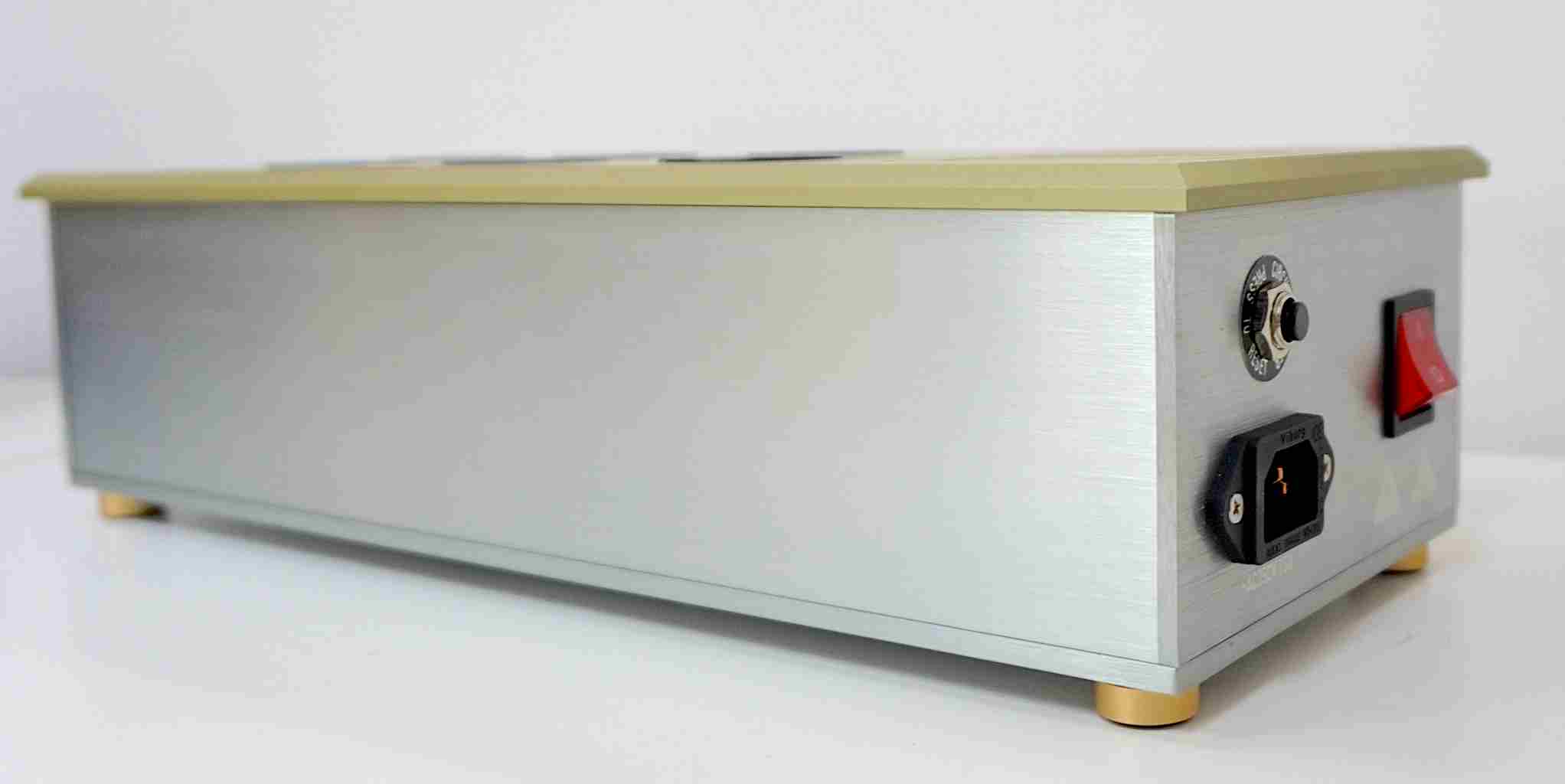
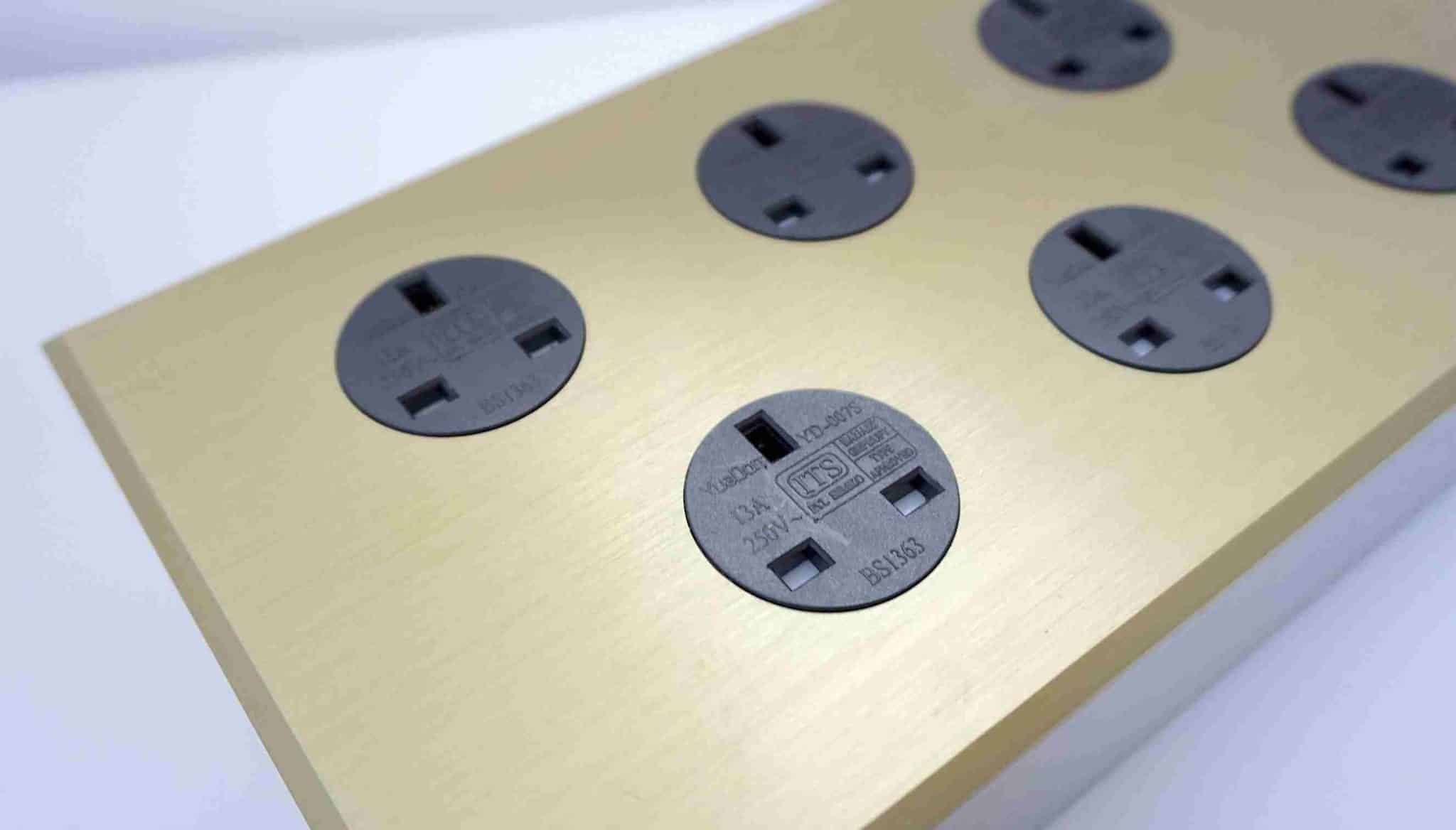
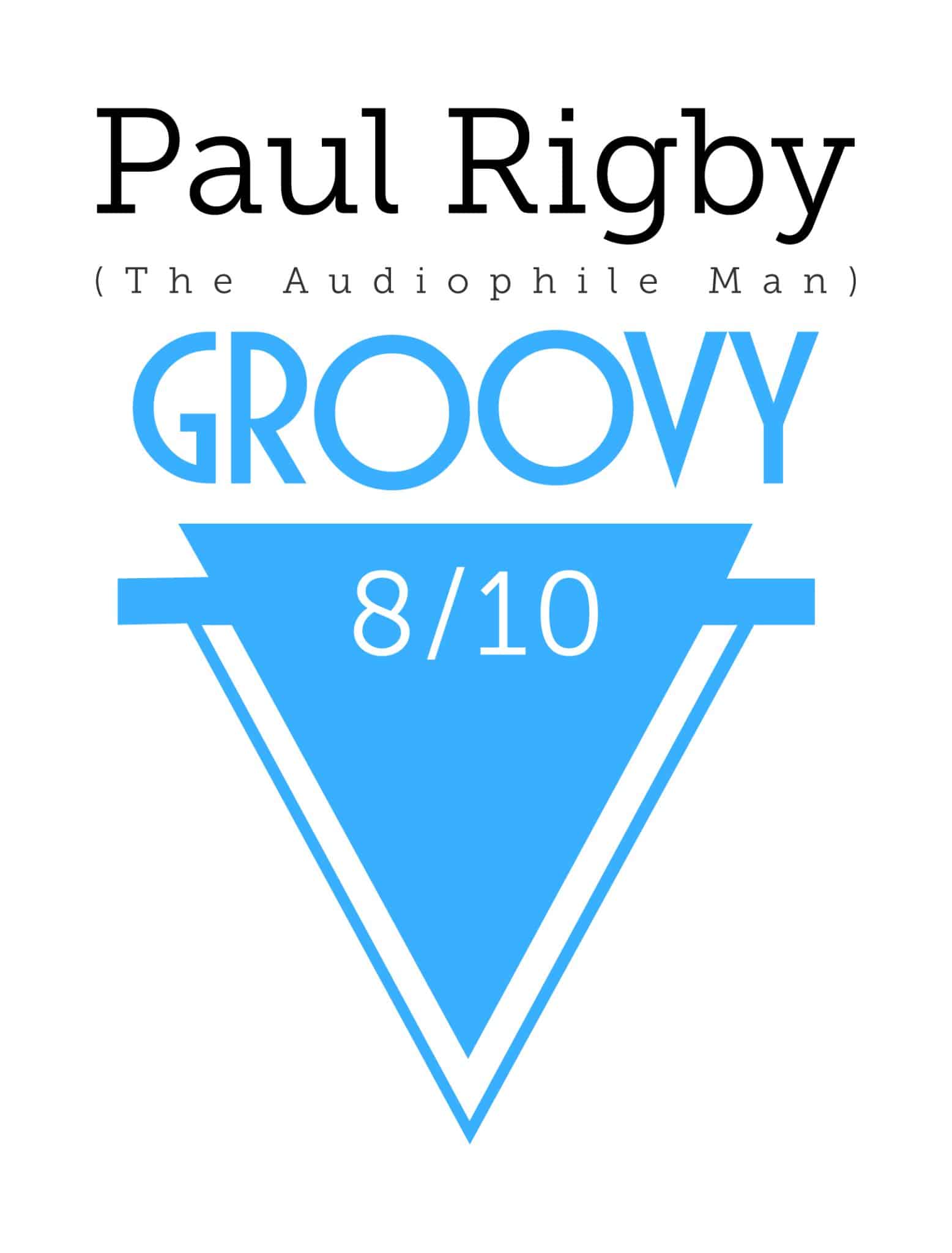


Hmm very interesting competition for the rest. Very fair review too Paul. As you already know I‚Äôm a Titan guy. From cables to block(s) and very affordable too. Their brand new Ares block looks a good deal for us poor mites. However they should a leaf out of HB Labs book in the area of easy placement as this new Ares has exactly the same pattern of layout as the Eros. This does not suit my location. The other cheaper blocks in their catalogue has a much more sensible in-line arrangement. The way HB Labs do it is outlined below. Now that‚Äôs what I call brilliant thinking outside the block sic üòâ
“The mains distributor has been designed for an easy placement on the side of the hi fi rack, when there is limited space behind, sockets layout allows user to choose Left Side or Right Side mains distributor.”
https://www.hblabs.co.uk/shop?Collection=Distribution Blocks and Wall Sockets
Paul, could you please expand a bit more on vs Titan Eros?
Sure – in short, the Eros was superior but then it’s nearly three times the price. Even so, in bass terms, I felt that the delivery from the VR6 was excellent and challenged the Eros in terms of lower frequency. Overall the upper frequencies were superior from the Eros and how the upper and lower freq. blended was superior from the Eros but if you isolated bass, then the VR6 sounded smooth, organic and performed remarkably well.
Is this a product actally designed and assembled by HD Laboratories, simply because it has more than a passing resemblance to a similar product from Viborg Audio (http://www.viborgaudio.com/plus/view.php?aid=341). Just a thought, HD Laboratories also offer other Viborg Audio products for sale. In contrast Titan products are assembled in Northern Ireland . . . .
I’ll ask HB about the connection, Ben. Thank for that.